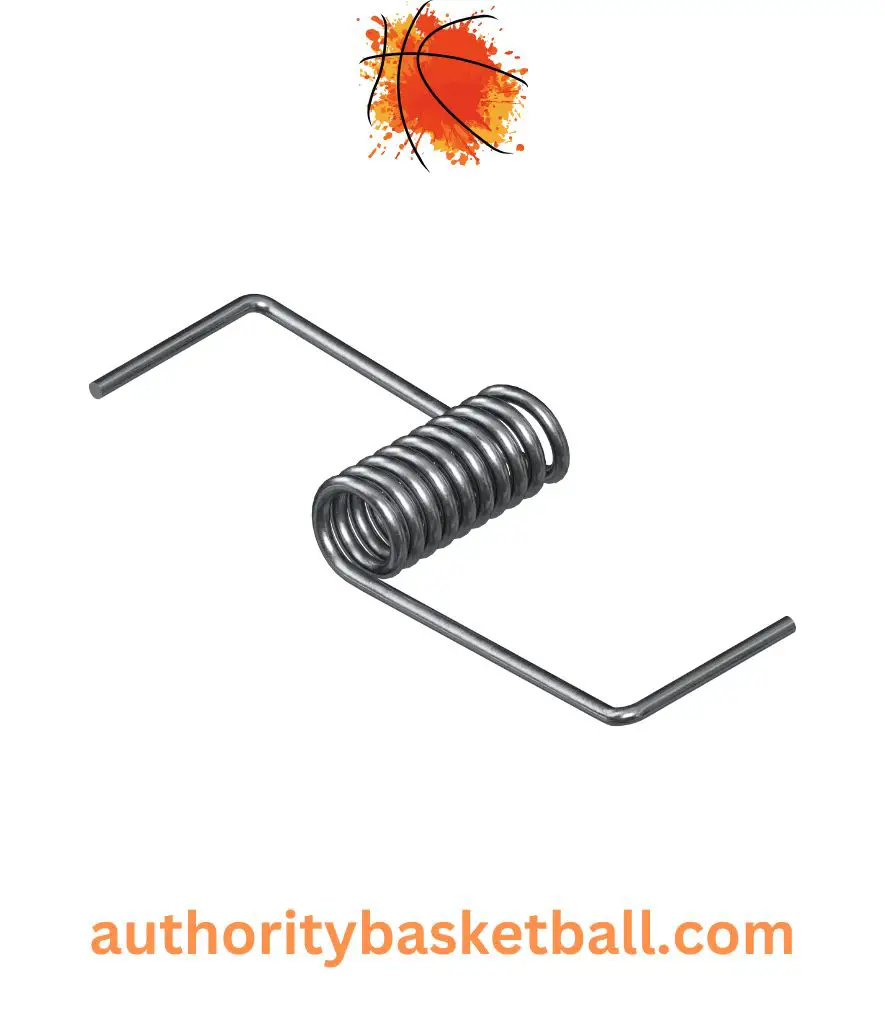Basketball is a sport that has evolved over the years, and the equipment used has changed along with it.
The basketball hoop, in particular, has undergone many modifications to improve its safety and performance.
One of the most significant changes is the inclusion of springs in the rim.
Let’s now examine this piece of equipment in more detail, starting with a concise answer on why they’re part of the functional setup of a basketball hoop.
The use of springs in basketball rims is to reduce the risk of injury to players, as well as protect the rim and backboard from damage when players dunk the ball. The force of the impact from a dunk can be enough to bend or snap the rim, as well as shatter the backboard if it’s not equipped with a breakaway rim.
The purpose of springs in basketball hoops
Basketball hoops are a staple of the sport, and they have evolved over the years to become safer, more durable, and more dynamic.
One of the most notable features of modern basketball hoops is the inclusion of springs.
This section will explore the purpose of springs in basketball hoops and their impact on the game.
1. Reduce injury risk to player’s hands and arms
The first and most important purpose of springs in basketball hoops is to reduce the risk of injury to players.
When a player dunks the ball or performs a layup, the force of the impact can be significant.
Without springs, the rim would be a solid piece of rigid metal attached directly to the backboard.
This would create a significant risk of arm and hand injuries to players who dunk the ball or hang on the rim.

The springs in modern basketball hoops therefore allow the rim to flex and bend when players put weight on it, which ultimately reduces the risk of picking up things like wrist injuries.
2. Protecting the rim itself from bending
In addition to protecting players, the springs in basketball hoops also serve to protect the rim itself from bending.

When players perform layups or dunk the ball and hang on the rim, the weight and force of the athlete can cause the rim to bend or even break, which would ultimately render this piece of equipment unusable.
The springs in modern basketball hoops allow the rim to flex and absorb some of this force, reducing the risk of damage to the rim.
3. Preventing damage to the backboard
The backboard is another important component of the basketball hoop, and it can also be at risk of damage from players dunking or hanging on the rim.
The springs in modern basketball hoops help to absorb some of the force and prevent damage to the backboard.

When a player dunks the ball or performs a layup, the force of the impact can cause the backboard to vibrate. If the backboard is not properly supported, this vibration can cause damage to the backboard over time.
By using a spring-loaded rim, the backboard is better able to absorb the impact and prevent damage.
This makes the basketball hoop more durable and long-lasting.
What are the types of springs used in basketball hoops?
There are three main spring types used for this piece of equipment.
We’ll now cover each one in turn…
Coil springs
Coil springs are the most commonly used type of spring in basketball hoops.

They are made from a long, coiled wire that compresses and expands when pressure is applied.
The coil spring is attached to the backboard and the rim to provide flexibility when the ball hits the rim.
The thickness and length of the coil spring can vary depending on the weight of the backboard and the desired level of flexibility.
More so, the coil spring is often covered in a protective casing to prevent rust and damage from weather conditions.
Torsion springs
Torsion springs are another type of spring used in basketball hoops.

They work by twisting the spring to create tension, which is released when pressure is applied.
Torsion springs are often used in breakaway rims because they can handle more force than coil springs.
Additionally, torsion springs are typically made from a thicker stainless steel wire than coil springs and are attached to the backboard and rim with a hinge.
When the ball hits the rim, the torsion spring twists and releases, allowing the rim to move without damaging the backboard.
Compression springs
Compression springs are the least common type of spring used in basketball hoops.

They resist axially applied force by compressing when pressure is applied, and then returning to their original shape when the pressure is released.
Compression springs are often used in adjustable basketball hoops to allow for easy height adjustment.
They’re typically made from a thicker wire than coil springs and are attached to the backboard and pole.
When the height of the hoop is adjusted, the compression spring compresses or expands to accommodate the change in height.
Overall, the type of spring used in a basketball hoop depends on the desired level of flexibility and the weight of the backboard.
Does the NBA use breakaway rims?
As a matter of fact, they do!
The competition introduced breakaway rims way back in 2009, and it took some players time to adjust to the new mechanics of the basket.
Here’s a quote from Tim Frank – the NBA spokesperson at the the time – who commented on their introduction to the game:
“We upgraded to the 180-degree breakaway rim to improve safety and reduce the risk of players injuring or straining their bodies, hands, wrists or fingers. We’re always looking for products that are safer without tangibly changing the game.”
Source – ESPN
The breakaway rim is designed to bend downward when a player dunks the ball, reducing the impact on the backboard and preventing it from damage.
Once the athlete’s scoring move has been made and they’ve released the rim, it quickly snaps back to its original horizontal position.
Do all basketball hoops have springs on them?
This isn’t the case.
In fact, certain types of hoops are meant for much more casual play and wouldn’t have spring mechanisms built into the m in the first instance.
A good example of this is when it comes to the best trampoline basketball hoops, which are designed for young kids to play basketball in their backyard.
At that young age and level of skill, they’re very unlikely to be able to perform sophisticated dunking manoeuvres and lay ups that would put pressure on a rim.
Final thoughts
The inclusion of springs in basketball hoops has had a significant impact on the game of basketball.
With the ability to flex and bend, players can now dunk the ball with more force and hang on the rim without fear of injury or damage to the hoop.
This has led to more dynamic and exciting plays, and has helped to make basketball one of the most popular sports in the world.
In conclusion, the use of springs in basketball hoops serves several important purposes. Not only do they help protect players from injury, but they also help ensure the longevity of the equipment.
With modern technology and design, basketball hoops have become safer and more durable than ever before.
If you’ve enjoyed this piece, then have a look through our related posts on:
- Why basketball hoops are orange in color;
- Why basketball hoops come with nets; and
- Why basketball hoops are expensive to buy
- The Most Popular Prop Bets Made During the NCAA Final Four Tournament - February 9, 2024
- Evaluating the Enigma: Does LeBron James Possess a No-Trade Clause? - May 16, 2023
- Gravity’s Dance: Unveiling the Art of Bouncing Basketballs - May 16, 2023
